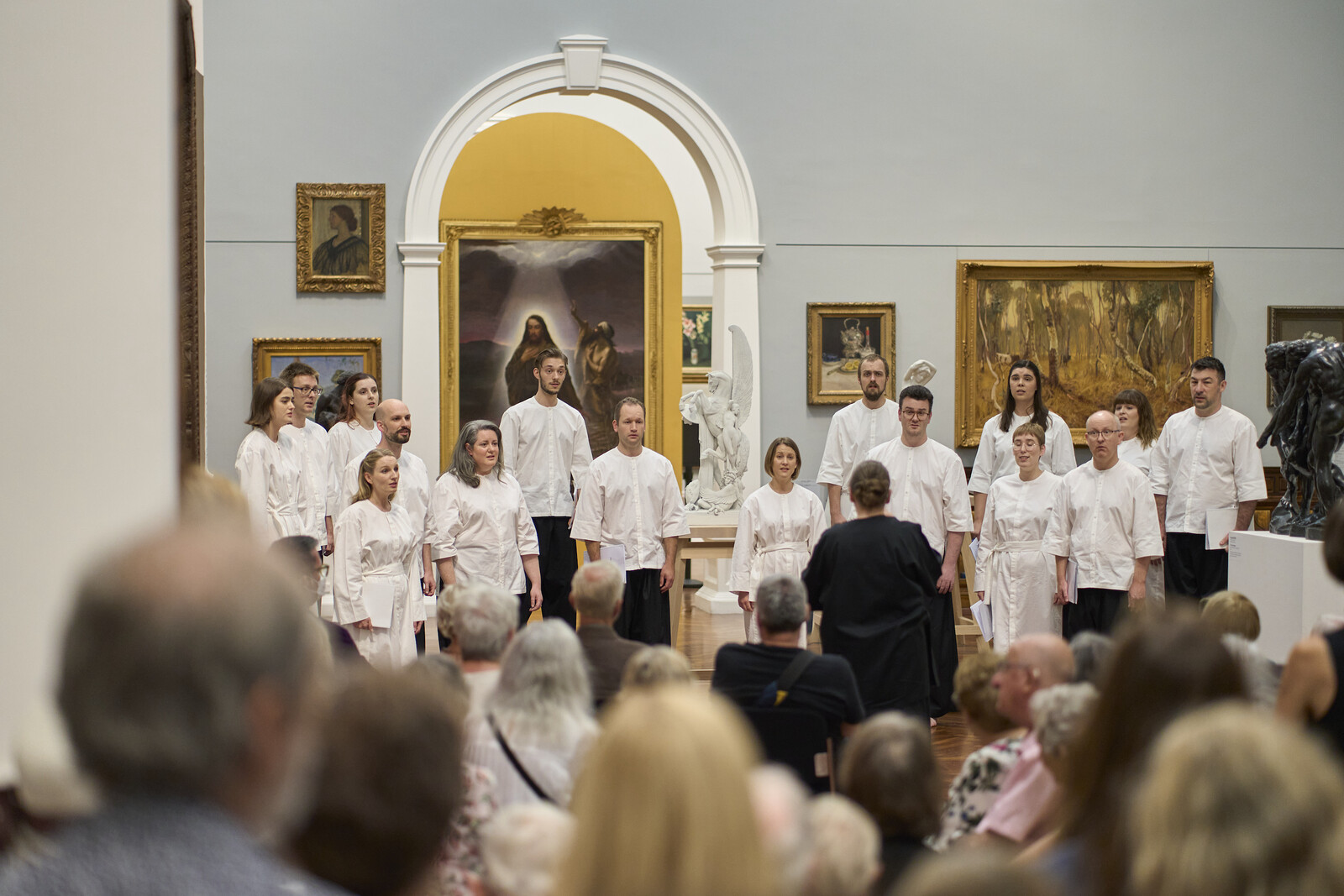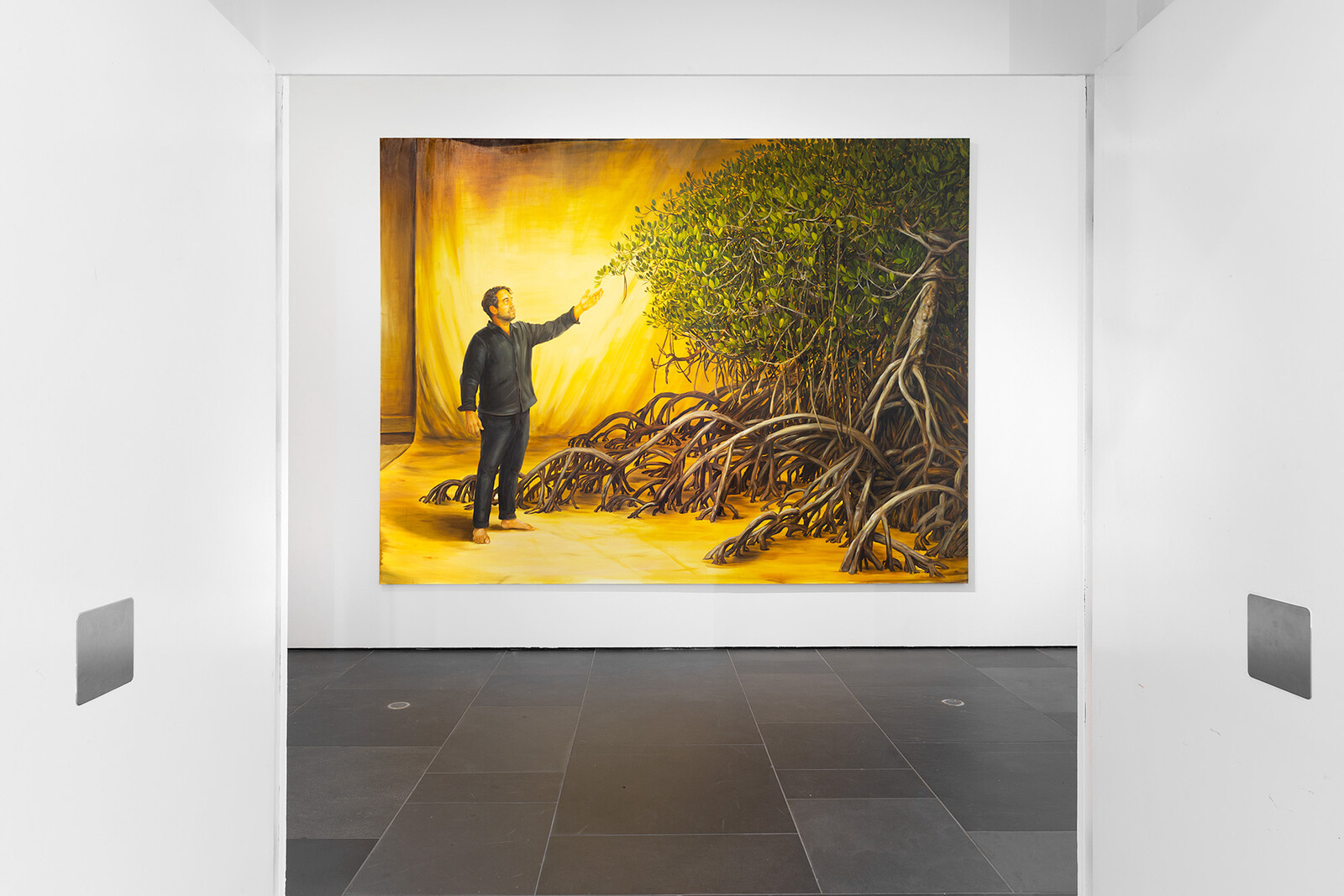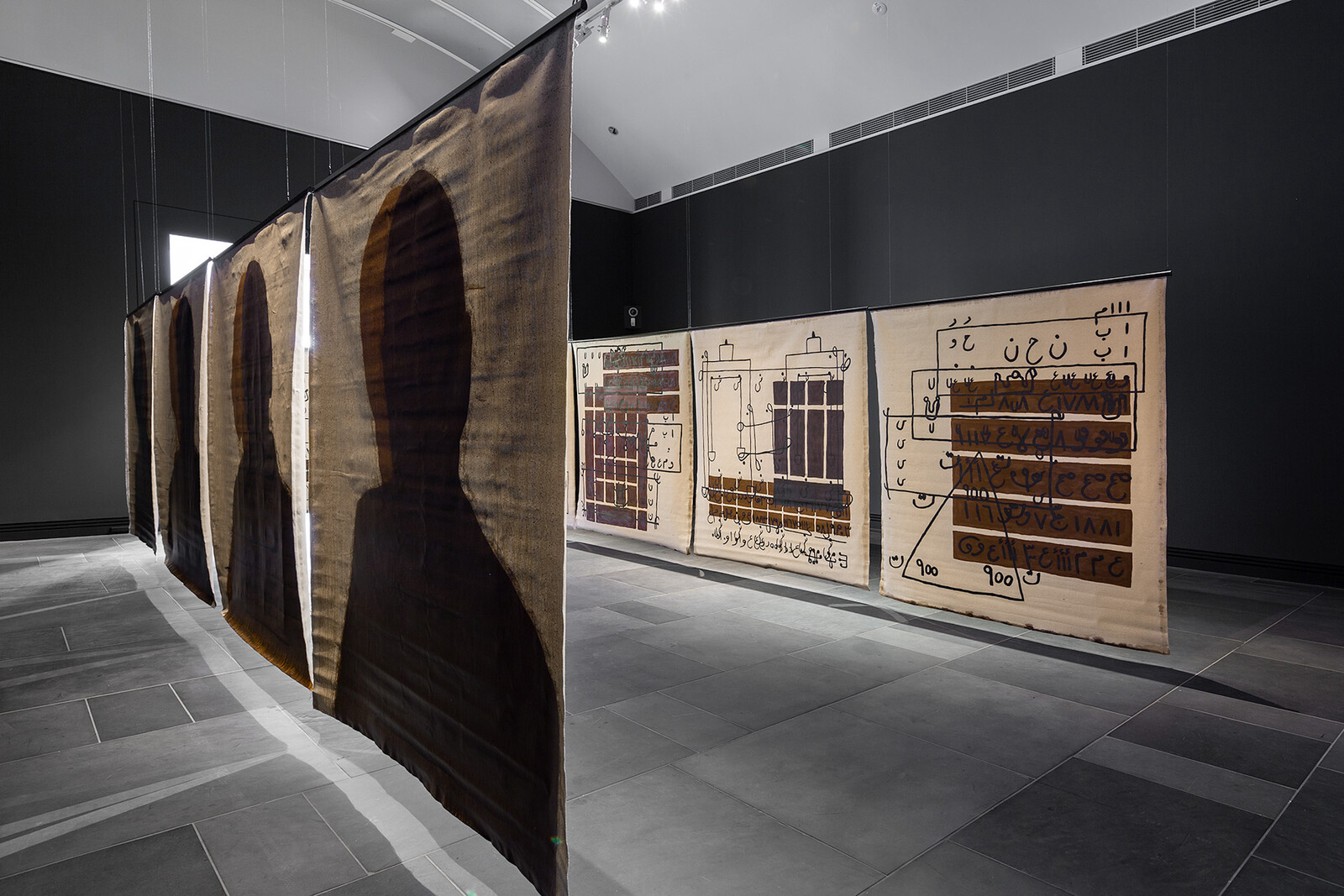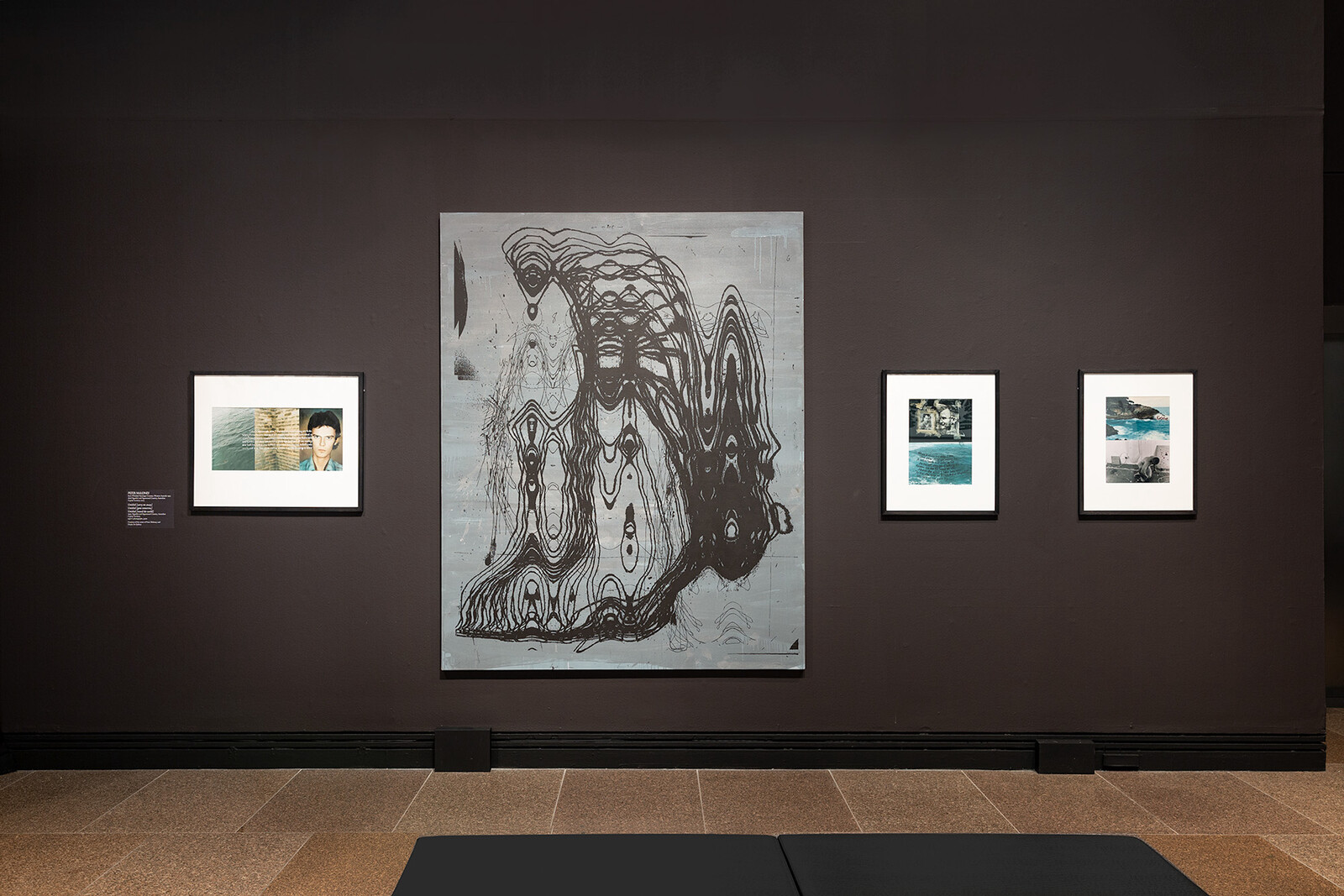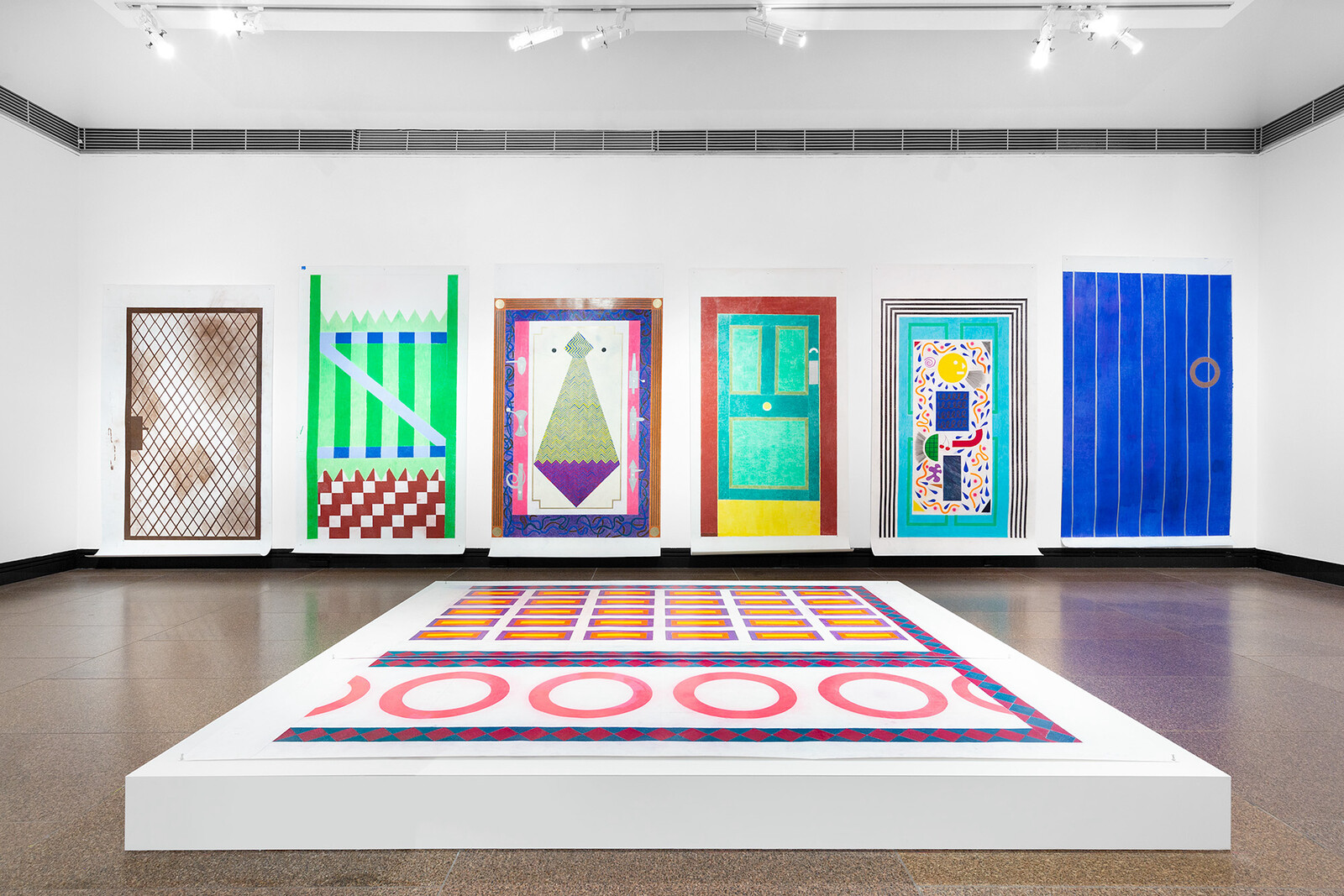In his writings on late modernity, Marxist historian Eric Hobsbawm skewers art as the complicit refuge of the soul under capitalism, arguing that it’s impossible to understand nineteenth-century Western arts “without a sense of this social demand that they should act as all-purpose suppliers of spiritual contents to the most materialist of civilizations.”1 More recently, a claim to the spiritual and the numinous in art has also been levied by radical and anti-colonial agendas. As the European bias of art institutions has been challenged, so too has its relation to a secular and materialist world.
Opening on March 1 and on Kaurna Yerta, the 2024 Adelaide Biennial of Australian Art patiently and deftly explores this paradox.2 The exhibition is far from polemical: its emphasis lies squarely on artistic practice and the interior lives of artists. Through unexpected choices and combinations, in a presentation that spans two levels of the gallery and incorporates a number of collection interventions and public space projects, curator José Da Silva brings together works from vastly disparate traditions under the unifying thematic “Inner Sanctum.”
The biennial’s far-reaching ambitions were marked from the start. At the show’s opening, viewers crowded into the Art Gallery of South Australia’s Elder Wing—a lush presentation that melds colonial landscape painting, Aboriginal art, decorative arts and regional Modernisms—to hear Faith (2023), a poem by the Adelaide poet and diarist Kate Llewellyn, performed by an ensemble of the Adelaide Chamber Singers in a haunting composition by Anne Cawrse. As the singers’ voices soared, the partitions of genre blurred and wavered, setting the tone for the rest of the biennial.
Adelaide—“the city of churches”— could hardly be a more fitting setting for “Inner Sanctum.” One of Da Silva’s many achievements lies in anchoring this survey of Australian art among the practices, landscapes, and social histories of South Australia. Visitors buying tickets are watched over by the impressive paintings of George Cooley, in which spatula-spread layers of thick, iridescent paint build up the famed escarpments of the Kanku-Breakaways. Cooley opens up the notion of an interiority to these mountains, both as a lifelong opal miner and as a senior member of the nearby Umoona Aboriginal community.
The exhibition is grouped into themes that act less like conceptual frameworks and more like sensibilities. In a central set of rooms, “The River Path” riffs on ideas of flow and ancestry, placing Christopher Bassi’s large-scale and yet unassuming self-portrait Meeting The Mangrove (2024) alongside Khaled Sabsabi’s tightly focused installation Knowing Beyond (2024). Very different in approach, both works are concerned with the relationship between place and being. For Bassi, this lies in an encounter with his totem, a red mangrove, far from his northern ancestral home in the Torres Strait Islands. For Sabsabi, the writing of Sufi mathematician and philosopher Ahmad Ibn’ Ali al-Buni guides a video and canvas panel installation that teems with sacred geometry.
The particular knowledges, sensibilities, and contributions of queer communities play an important part throughout. Works by James Barth, Jazz Money and Nik Pantazopoulos each remind viewers of the queer imperative to self-fashion myths and archetypes, which range from iconographic toilet doors (Pantazopoulos) to a virtual reality death dance (Barth). One of the most haunting contributions of the biennial is the close attention that it pays to the recently deceased artist Peter Maloney. A series of overpainted photographs from the 1990s combine an improvised and aggressive fragility with occasional glimpses of Australian settings, such as a wave crashing against a cliff.
The sacred rites of death and loss return throughout the exhibition, and are brought fully to life by senior Tiwi artist Kaye Brown. Her contribution relates to Pukumani, a Tiwi funeral ceremony which takes place six months after burial. Preparations for the work started more than a year in advance and involved many hands, including Brown’s brother Kenny Brown who collected and seasoned bark for the purrungupari, while artist Pedro Wonaeamirri prepared a tutini iron-bark pole. Many stages of gathering led up to Brown’s final application of complex cross-hatched painting onto the forms, including travel to visit a body of work held in an Adelaide museum, made by family members over a century ago.
Shockingly, this work was destroyed in its entirety when a transport vehicle spontaneously caught fire. Yet Brown’s response reframed the devastating loss: “We hear it from our ancestors; I think maybe my ancestors did not want all my work to go down to Adelaide and follow all the work from 100 years ago. […] Like in Pukumani, you’ve got to leave the pole. You don’t restore it. You let it go, like with this.”3 Although not present in its physical form, Brown’s contribution was represented in loans of exemplary pieces, as well as in a booklet that carried these reflections. The work, Brown explains, had taken shape in the occasion of gathering and ceremony. What remained for the audience was a profound reflection on the nature of art objects in reconciling loss, and on the strange eternity of the art museum.
Eric Hobsbawm, The Age of Capital: 1848–1875 (New York: Vintage: 1996), 335.
Kaurna Yerta refers to the Kaurna peoples’ traditional tribal land, or Country, which encompasses the area on which the city of Adelaide is sited.
Kaye Brown: Inner Sanctum (exhibition pamphlet) (Adelaide: Art Gallery of South Australia, 2024), 7.

